6 Designing Ritualistic Mobility Experiences: Key Scenarios

Photographs and notes from our brainstorming session.
In our ideation workshop we explored scenarios for each of the six key themes we had identified as a tool to inform future design opportunities.
Ideation workshop – physical organisation and mental preparation
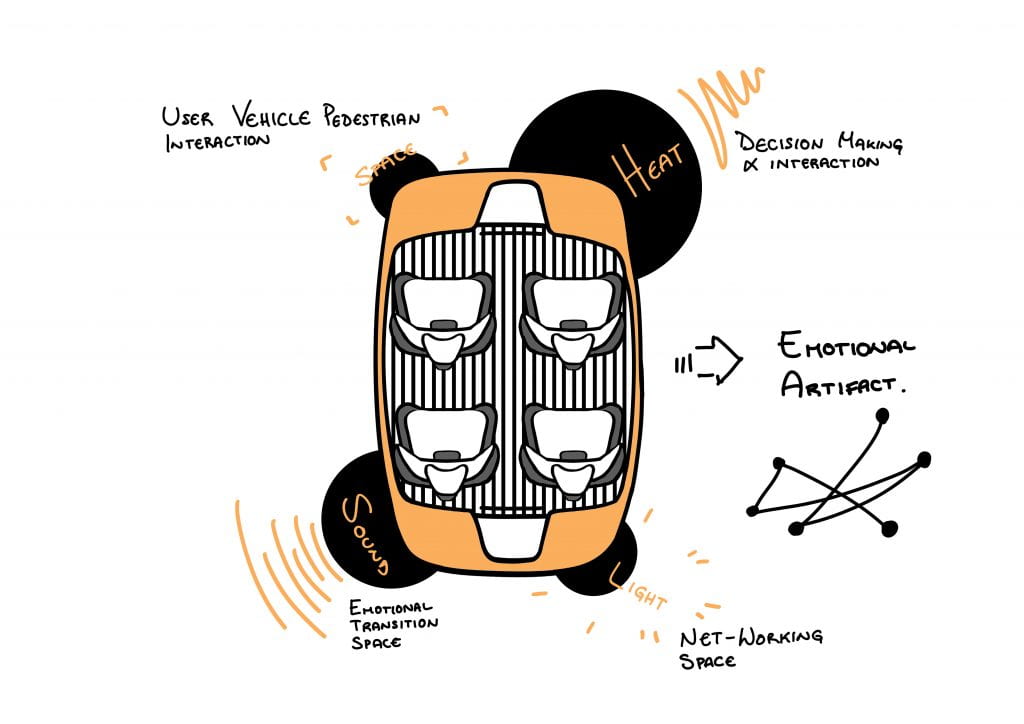
Workshop sketch illustrating – Physical organisation and mental preparation ideation.
We wanted to discover how people prepare for and relate to their journey before starting out. To do so we explored the practical and psychological preparations that people make before a car journey. The key points of our discussion were: what type of organisation do people usually make before their drive and is there a sequence that they follow? Additionally, we looked at the benefits of driving-related rituals and what aspects can be retained, adapted or encouraged as greater levels of automation are used in vehicles. We also discussed opportunities for reverting digital elements to analogue and if this could support the driver’s pre-drive rituals and experience.
Ideation workshop – Playful in-vehicle activities
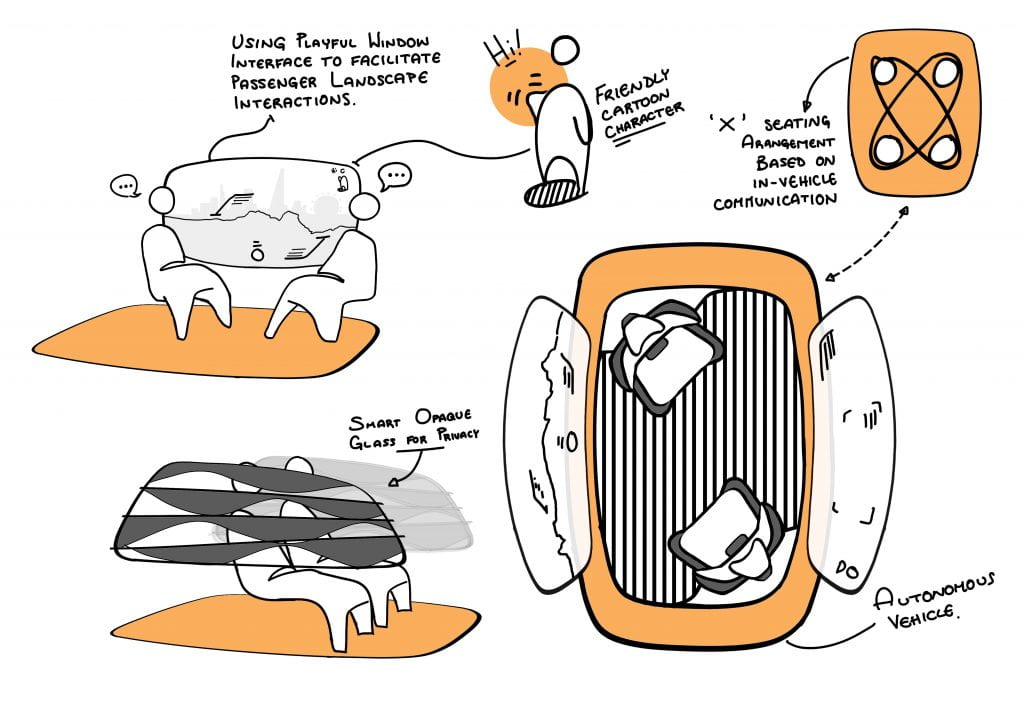
Workshop sketch illustrating – Playful in-vehicle activities ideation.
We questioned how we might encourage interaction between the vehicle’s occupants and the passing cityscape or landscape using playful elements. We explored how games or playful activities could encourage drivers and passengers to interact and be entertained within the car as well as with the changing views outside of the vehicle. Currently, drivers are occupied with the necessary actions to control the car, however, with increased levels of driverless
Ideation workshop – Vehicle as an extension of the driver
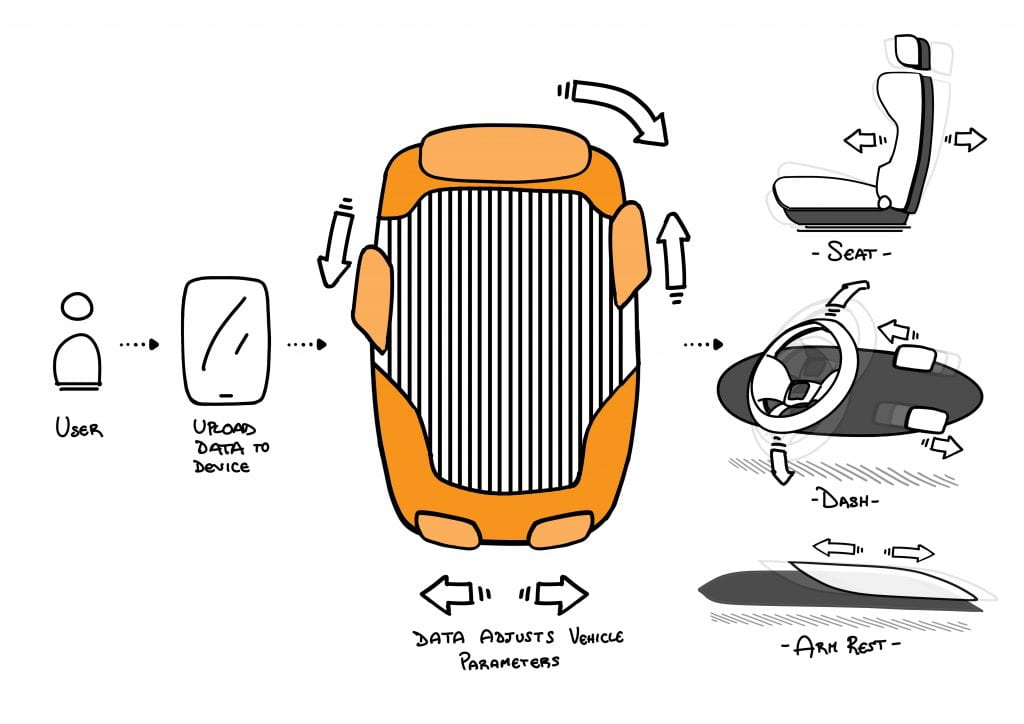
Workshop sketch illustrating – Vehicle as an extension of the driver ideation.
We focused on the relationships that people have with their vehicle as an extension of their identity and body. Cars are inanimate objects, devices to support people, yet many feel they have a relationship with theirs. This can be through the tactile experience of connecting with the steering wheel, or by feeling enveloped by the seat. The appearance of a person’s car can also be seen as an extension of their identity or personality, which suggests a relationship beyond merely considering it an inanimate object.
Ideation workshop – Relationships and personalisation within shared vehicle spaces

Workshop sketch illustrating – Relationships and personalisation within shared vehicle spaces ideation.
In this session we considered how interior spaces in different forms of transport with multiple passengers are shared social spaces. These areas are continuously shifting as drivers, passengers and objects negotiate with each other and navigate within the space. However, the way a family or friends use in-vehicle spaces differs from the way strangers do. This led us to look at how drivers and passengers personalise these shared spaces.
Ideation workshop – Transitional mindsets
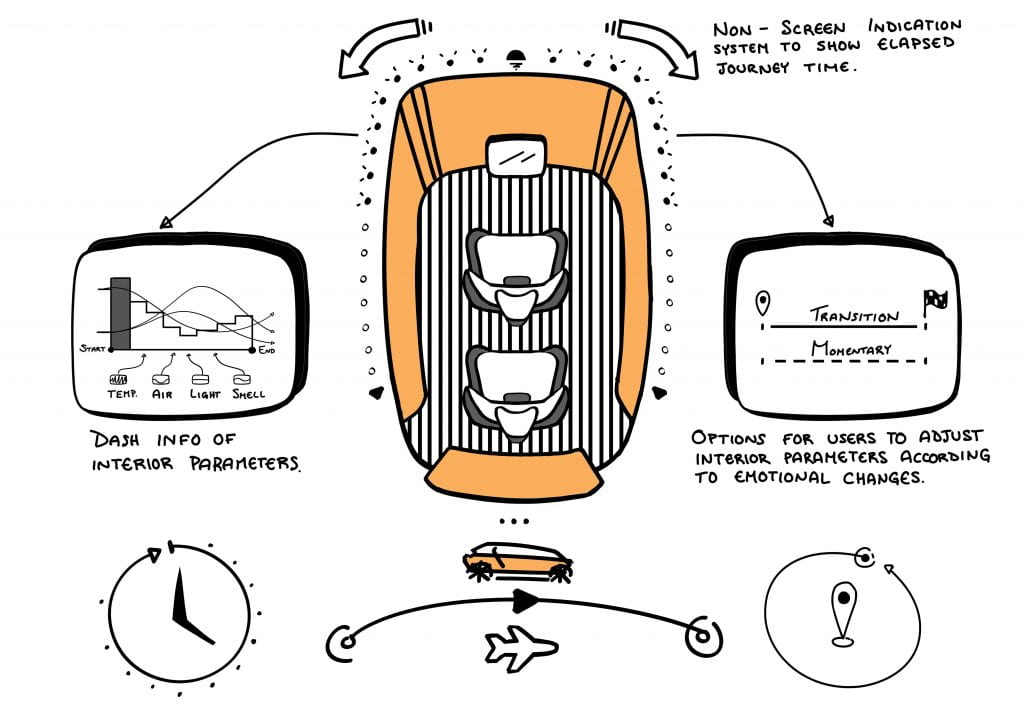
Workshop sketch illustrating – Transitional mindsets ideation.
We explored how journeys can enable people to make psychological and emotional transitions while they travel. Transitioning from one place to another allows time for people to decompress, clear their mind and reflect. From a design perspective we discussed whether the vehicle interior could modify itself to complement the mood of the occupants or adjust to create a space that supports people to prepare for arrival at their destination.
Ideation workshop – Post-journey events
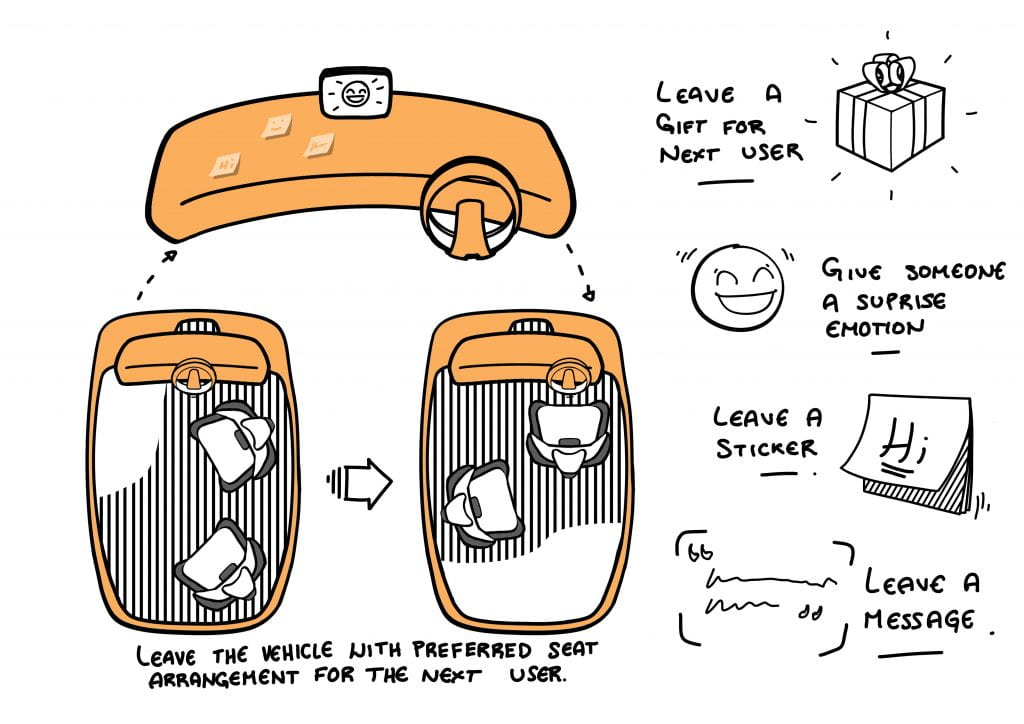
Workshop sketch illustrating – Post-journey events ideation.
Our research has suggested that ritualistic experiences happen before and during journeys. We explored ideas for vehicles to prompt meaningful, post-journey, ritualistic actions, particularly in the context of the increasingly prevalent sharing economy. With these questions, we explored ideas around neighbourhood communities or close friends and how they could socialise using shared vehicles. A small gift, a warm greeting message or a preferred space organisation left for the next users, prompted by the in-vehicle information system, could be developed.
Photographs from the ideation workshops.
Previous Chapter
